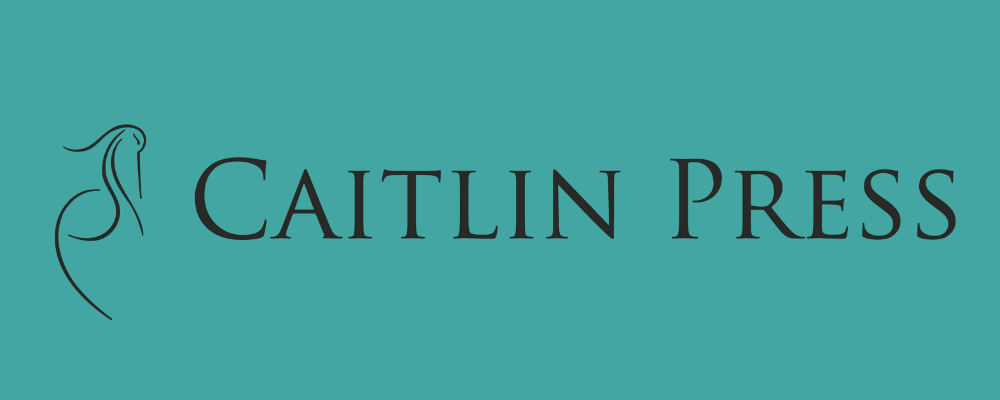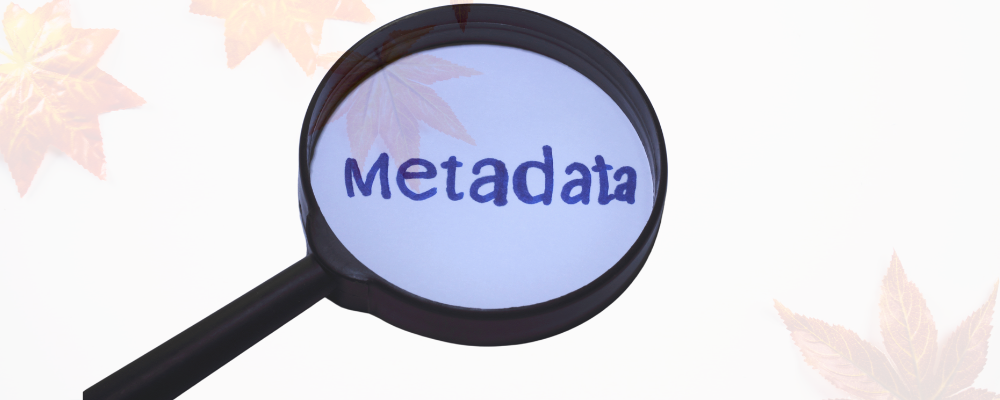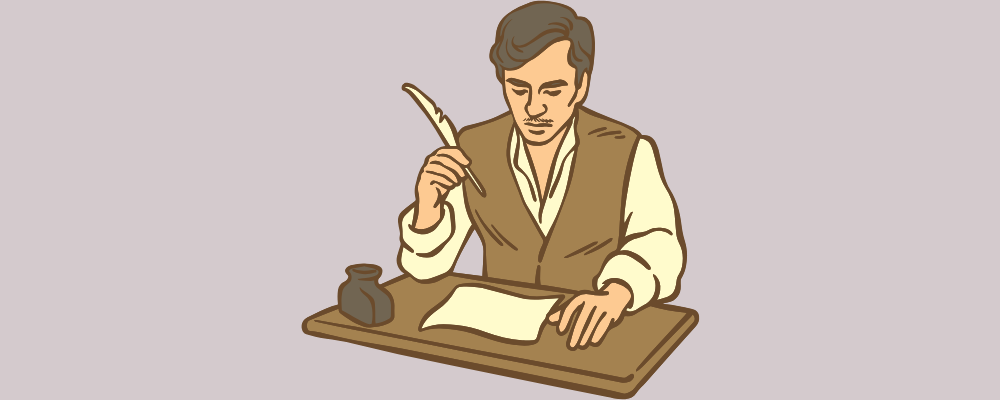The Tech Forum website is the largest repository of professional development content for the Canadian book publishing industry. Whether you’re looking to learn about bookselling, ebook production, accessibility, marketing, or any other subject, we likely have something for you — and if we don’t, we encourage you to submit your suggestions for future content as we continue to offer free, accessible webinars on a wide range of topics.
From video recordings of virtual and in-person presentations to slides, podcast episodes, and blog posts, we’ve got a wealth of content in your preferred format.
Recently, Leah Brochu presented two Tech Forum sessions to share tips and techniques for writing alternative text. Below are five takeaways from her sessions, The details of description: Techniques, tips, and tangents on alternative text and Details of description part II: Describing images in practice.
Takeaway 1 — Context & audience
When describing an image, always take context into consideration. The context of an image is going to give you clues about where to put your focus because in most cases you don't need to describe every single detail. A picture might be worth a thousand words, but you don't want a thousand words in the alt text. The context will help you avoid unnecessarily repeating details.
Audience is a big part of the context. Images might need to be described differently depending on whether they're written for a child or for an adult or maybe for a PhD student. You're going to be able to use the language, tone, and voice of a book to help you inform the tone and voice of your description. How the author is talking to the audience is how you want to talk to the audience through these image descriptions.
Takeaway 2 — Be concise
One of the benefits of paying attention to the context is that it will help you be concise. In general, we want alt text to be brief. Despite the popular belief that there's a certain character limit to alt text, this is often not the case. In most instances you'll be allowed to write really long alt text. That said, you don't want to be going on and on describing every detail in a particular image. Not only is this difficult for the person who's writing the description, it can also be distracting for the reader. At worst it can lead to cognitive overload which is when a task demands more processing capacity than our cognitive system has. Here are a few tips to avoid this:
Explain core concepts first. Describe the big picture before zooming in.
Eliminate unnecessary information. Don't go into too much detail. Draw attention to the most important elements.
Use simple and straightforward language.
A rule of thumb is that alt text shouldn't be more than a few sentences. If you need it to be longer, then you'll want to use a long description. If you need multiple paragraphs or lists, or you want to use headings for structure, you'll want to use long description. Long description is often used for things like graphs, maps, and charts.
Takeaway 3 — Be objective & don’t censor
Don’t include your own thoughts and interpretations in the descriptions but also, don’t describe the images like you're completely oblivious to the context. This is a true balancing act and requires practise.
Don't censor images either. If you're describing images from the Kama Sutra, you'd want to be detailed in order to ensure that the reader gets all the necessary information. Or, if you have a first aid handbook, there's likely going to be images and a discussion of wounds and subcutaneous fat. These need accurate descriptions so all readers have the same information. Even though something might be described in the text, the image reiterates the discussion, aiding learning. This process is useful to everyone, even those who aren't accessing the images visually. So, you have to describe it. And if you can't, ask someone else to help because all readers deserve the same experience.
Takeaway 4 — Build a knowledge base
When you start to build a knowledge base or a style guide here are some things to include:
Decide on definitions and the terminology you'll use in your organization. As an example, some people say long description while others say extended description though both refer to the same thing. Some also talk about image description and alt text interchangeably when image description is more of a blanket umbrella term, while alt text is more specific, referring to the coded text that can be included in the alt attribute. Since you'll likely have more than one team member working in this area, establishing the terms and how they're being defined and how you're using them will be an important step to ensuring everyone is on the same page.
Include workflow processes and considerations in your style guide. The way you approach image description work will be unique. Some people prefer spreadsheets, others prefer a text document. Whatever works best for you and your people, build a template for it. If you're working with a conversion house that provides a template, write down the workflow steps for how to fill it out. Include steps for drafting, reviewing, fine-tuning, editing alt text, and so on. Outline that process so there's a set standard and path to follow.
You'll also want to include technical or logistic techniques you employ. This can be as simple as providing a final document containing all of your polished alt text to the conversion house or freelance ebook creator. Or, if the work is done in-house, it can walk the worker through adding the alt text or the long descriptions into the EPUB whether you're using InDesign or a text editor like Sigil or BBEdit. Just have a system for documenting and getting those alt texts in the code.
Then, the most important part, use the general guidelines of image descriptions that you've learned from the existing resources out there. Share the guidelines and include examples from your own repertoire because there are a few grey areas and you'll want to build your own approach.
Takeaway 5 — Collaboration
When it comes to image description, collaboration is essential. It's easy to miss key components when you're trying to describe images and different parts of certain images will stand out to different people. The importance of collaboration is particularly for people who haven't done a ton of work describing images, it's really easy to over- or under-describe. So, having a second person will almost invariably streamline an image description.
Image description work can be quite challenging and maybe even draining or monotonous sometimes, depending on the content. And having a collaborator means having a support system. There's also times when you might come across images that are hard to describe because of the content and your own personal feelings or relation to it. Maybe something is traumatic, or gory, or hard to describe in some way. So, if you feel like you're faced with an image that you can't describe, having a partner or collaborator can take the pressure off. Additionally, having a collaborator means that you have a broader knowledge base available, which will inform the image description writing.
When it comes to who's responsible for writing image descriptions there are a few options. Firstly, in-house options. Some publishing houses are able to build the capacity to work on their image descriptions in-house. The ability to do this comes down to a few different factors like funding, available time, and importantly, how image-heavy the content is typically. Bringing image description in-house is ideal, although it's certainly not always doable.
Secondly, another option which is ideal, but definitely not always doable, is having the author or illustrator draft image descriptions. They are the person generally in the best position to describe their content. They know what they intend to convey by including a specific image, which is a meaningful part of describing the image. When you have conversations with authors, be sure to talk about images and image descriptions and let them know that in order for ebooks to be accessible to everyone, they need to have accurate and meaningful descriptions. And while descriptions require editing and copy editing, that will likely take less time than it would for someone totally unfamiliar with the content to describe an image from scratch.
Thirdly, you can of course outsource the work. You can work with Canadian or overseas conversion houses. You can search out subject specialists if the book's topic and images are more complex or scientific, or you can search out freelancers who may take on this sort of work. There's a wide range of quality out there. So if you're going to go down this road, be mindful that a careful review of the draft descriptions will likely need to be conducted regardless of the source.
And finally, an up-and-coming potential collaborator is artificial intelligence like ChatGPT. It's a potential option that publishers and authors can consider, although it's not quite there yet in quality, particularly for complex images or images that have key contextual information in the surrounding text.
Regardless of who drafts the descriptions, collaboration and teamwork will help make them as strong, concise, and useful as possible.
These five key takeaways are helpful when starting with image descriptions but this work can often be complex when you’re faced with different situations. Watch Leah’s sessions: The details of description: Techniques, tips, and tangents on alternative text and Details of description part II: Describing images in practice for more guidelines, techniques, and examples for writing image descriptions as well as information on how to use AI as a contributor.
Hungry for more Tech Forum? Sign up for our newsletter, subscribe to our YouTube channel, and keep your eyes peeled on our website to register for upcoming webinars and rewatch old favourites.














Insights into the latest updates and additions made to ONIX codelists.